Contents
If you have a land plot, then most likely you have either already grown potatoes on it, or are going to do so. This root crop is so popular that everyone is trying to plant it, believing that they don’t have to bother with it much, any soil is suitable for potatoes, and the harvest will be in any case. In fact, potatoes are a very capricious vegetable. It’s only at first glance, everything is simple: I dug a hole, threw a tuber there, covered it with earth – and all the technology. But a fastidious culture will not yield a crop in any soil, and it will not be content with a waste place on the site either.
Growing healthy potatoes with good yields is not easy at all. An integrated approach is important here, including the selection of a landing site, fertilization, seed selection and pest control. Let’s start with the basics.
What kind of soil do potatoes need?
If you were interested in this issue earlier, then all sources reported one information: potatoes love light and loose soil. Of course, there are ideal soils for growing vegetables, but most likely, your site is not one of them. The soil for potatoes is good loamy or sandy loamy. An excellent potato harvest can be achieved if the soil is peat or black earth.
The soil for potatoes is not suitable if it is heavy clay. It is easy to determine it – water stagnates on the surface during the period of snow melting or after heavy rains. Sandy soil is also not favorable for vegetables. However, it is also possible to plant root crops on such land and get a pretty good harvest, only painstaking pre-plant preparation for refining and more thorough care are required.
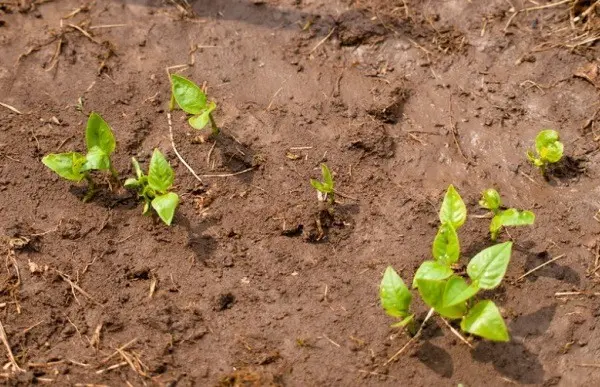
Regarding the location of the potato field – here it is worth choosing a site free from dense shade; one where the sun does not look at all – will not work, because the plants can turn yellow, drive out, give poor flowering. You will get either a small crop, or tubers that are too small. Ideally, if an open sunny plantation is protected from the north or northeast by shrubs.
In addition, the ideal soil for potatoes is slightly acidic. Determine the degree of acidity will help us … weeds on the site. Do not be surprised, they are an excellent indicator of the quality of the fertile layer. Dandelion, wheatgrass, clover, chamomile, coltsfoot feel great on the soil loved by potatoes.

There is another popular way to determine the seat for potatoes. To do this, take 4 leaves of bird cherry and brew them with a glass of boiling water. Let’s wait until the infusion cools down, and throw a lump of earth from the site into it. By the resulting color of the mixture, it is easy to determine what acidity the soil on which you decide to plant potatoes has: red shades – the soil is acidic, a greenish color indicates a slightly acidic environment, which we need, a blue tone indicates neutral acidity. The acidity shown should not scare you away from planting potatoes, it can be corrected by applying various fertilizers.
So, we found out that with a great desire, potatoes can be grown on any soil, only labor costs will be different with the same desire to get a crop.
Video “How to determine soil acidity using folk methods”
In the video, the gardener tells and shows how, using folk methods, to determine the acidity of the soil on the site ”
How to prepare the soil for planting
Potatoes bear fruit well if the earth is loose, moist and well ventilated, so we will proceed from these parameters as ideal for potato soil.
The processing of the landing site should begin in the fall. The selected site is freed from the tops of previous plants and weeds. Then it is carefully dug up with turning over the earth layer. Digging should be on a full spade bayonet. Plowing should not be leveled, this is done specifically so that in winter the pests that have dug in the ground die from the cold.
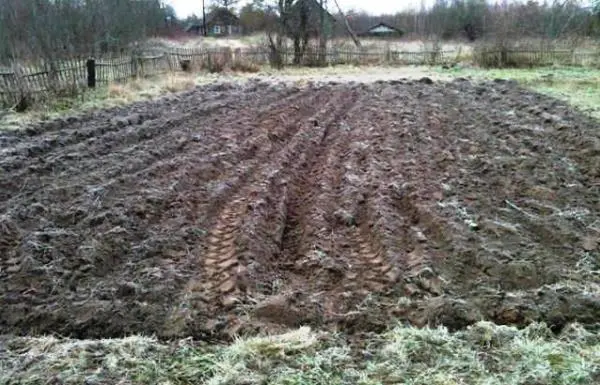
Additionally, you can build shallow furrows to drain excess moisture in early spring, this is especially true for clay soils.
In the spring, the site is loosened with a rake, this process is done when the earth dries out and begins to crumble. After that, the soil under the potatoes will retain spring moisture. When the sun warms up the top layer sufficiently, the site is dug up, loosened and leveled. Light soils can not be dug in the spring, it will be enough to loosen the earth, saturating it with oxygen.
It must be remembered that the purpose of spring processing is to create loose soil for potatoes, destroy weeds, pests and preserve valuable spring moisture. Another aspect of processing is the application of fertilizers and their placement at the desired depth of the formation.
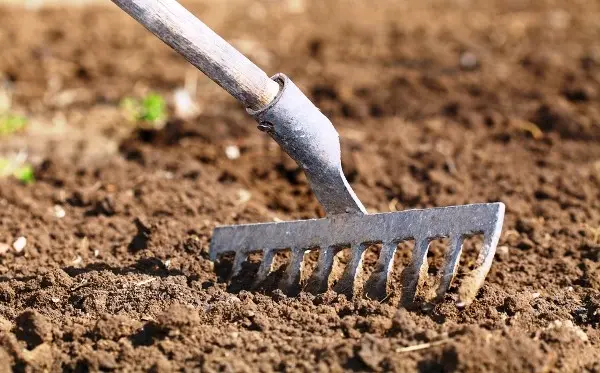
Potatoes are demanding on the soil in terms of fertility. It draws from the soil a different amount of trace elements that it needs for normal growth and productivity. Different types of soil will require different fertilizer application. The pre-tillage factor for potatoes also plays a role: if you have loosened the soil perfectly in compliance with the above rules, then the plant will need fewer nutrients to grow and develop at the initial stage, because you have eliminated adverse factors that prevent the normal development of the vegetable.
It should be understood that during different periods of growth, potatoes require different minerals for “feeding”, for example, during germination (before flowering), they need phosphorus and potassium, and during flowering, an increase in nitrogen consumption is observed. Therefore, they try to introduce the necessary elements with hilling.
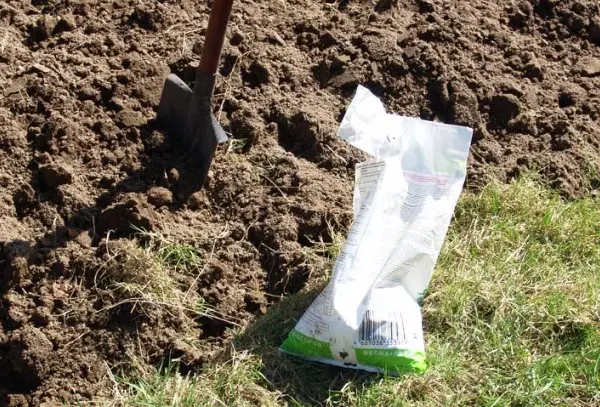
We will give approximate norms of fertilizers based on 1 weave:
- With fertile soil, about 2 centners of manure will be required, which can successfully replace compost, 1,5-2 kg of ammonium sulfate, about 2 kg of superphosphate and no more than 1,5 kg of potash fertilizers.
- If the land is not sufficiently fertilized, poor in minerals, then we apply more fertilizer to the soil for potatoes. We increase the amount of manure by 2 times, we also add about 1,5 times more of all the listed fertilizers.
- On peatlands, the amount of manure is reduced to 1-2 centners, but superphosphate (up to 3-4 kg) and potash fertilizers (2-2,5 kg) increase, we additionally add a small amount of boric acid to the soil for potatoes, 30-50 g is enough.
Wood ash has a good effect on the increase in yield, it can be applied to any type of soil. 5-10 kg per hundred square meters is enough to enrich the soil for potatoes with a whole ensemble of useful substances and minerals.
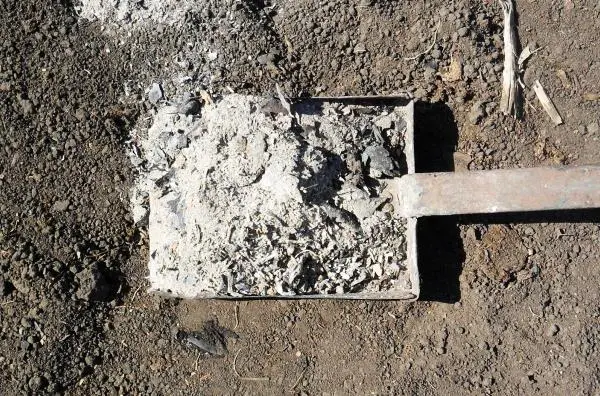
Manure or compost, as well as superphosphate, must be applied to the soil under potatoes when digging in the spring. These fertilizers are laid to a depth of approximately half a shovel.
Nitrogen fertilizers or others chosen by you are not applied all at once, but in several stages. Half of the norm goes into the soil for potatoes with harrowing after digging. The rest should be divided in half and applied before hilling the bushes when they reach 15-20 cm and again – during the budding period.
Potato varieties for different types of soil
Successful soil preparation for potatoes is not all the nuances of growing a vegetable. It is worth taking care of choosing the right planting material, in other words, choosing a variety that will give a good harvest on your type of soil.
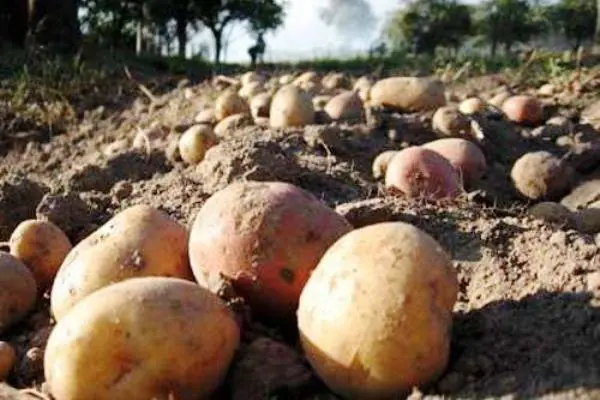
We will give some of the most common varieties with their gradation of planting on different soils:
- Bullfinch – pink potatoes of medium size, have red eyes. It can be grown in any soil.
- Rose. If you have light soil for potatoes or peat soil, it is suitable for growing.
- The early variety Zhukovsky feels good on any soil, so its cultivation should not cause problems.
- Another early variety – Belorussky – honors its name and prefers “native” peat bogs.
- Cleopatra loves sandy and clay soils.
- The novelty is completely unsuitable for heavy soils, but on cultivated loam, peat and sandy loam areas it will please you with a good harvest.
- Sedov prefers only sandy and loamy soils.
- Nevsky also manages to be grown up on glory on loams and sandstones.
- Svitanok Kyiv sits exclusively in the areas of woodland, steppe or forest-steppe.
- Treasury gives an excellent harvest on fertile light loam.
- Blueberry is ideal if you have high groundwater, it is a “water drink”, so if you want high yields, take care to supply it with the right moisture.
- Coloring and Nakra are universal for any plot – you can safely plant and enjoy the harvest.
- Lasunok is suitable for planting only in light soils.
- Loshitsky prefers moist soil, respectively, land with a high content of sand will not suit him.
- The climber is resistant to any changes in the soil, even in a peat bog it can wonderfully produce a crop.
Video “Feeding the soil for potatoes with ash and mineral fertilizers”
The video tells what fertilizers and when to apply in the area where potatoes grow.









